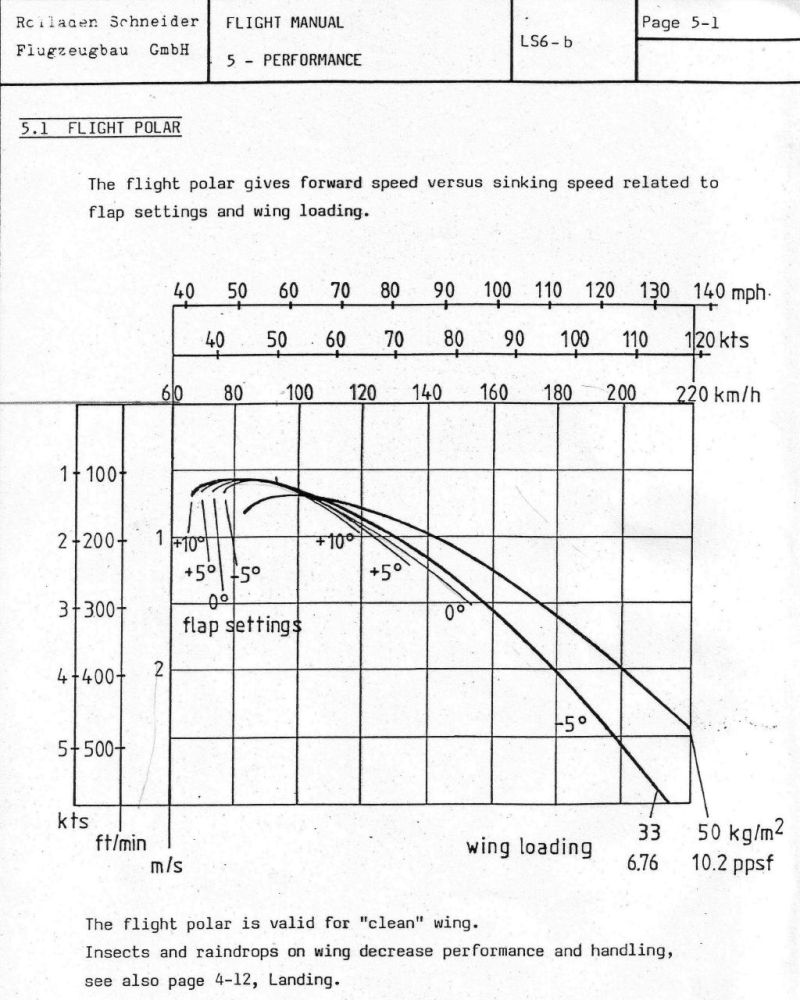The purpose of adding water ballast is to increase glide performance at higher speeds. A sailplane has a best glide ratio at a specific speed - which is weight dependent. Fly at any other speed and your glide ratio will be less. A glider and pilot may have a best glide ratio of 40:1 (for instance) at 50 knots. Add 400 pounds of water and that same 40:1 (pronounced "forty to one") is now achieved at around 60 kts - and any other speed will get you less.
For the techies among us, the performance speeds (stall, maneuvering, best glide, etc.) vary with the square root of the weight change ratio. If a 750 pound plane and pilot gets its best glide ratio of 40:1 at 50kts, adding 400 pounds water changes the weight to 1150, and so the new best glide speed is sqrt(1150/750) times 50 = 61.9kts. The best glide ratio of 40:1 stays the same!
OK, we've established that the glide ratio, also called the "lift over drag ratio", also called "L over D" (L/D), changes with speed. A typical fiberglass glider that gets 40:1 at 50kts will only get about 23:1 at 80kts. A very good glider changes that to 30:1 at 80kts. This why you pay $40K for a used glider instead of $25K when they both have a best glide of 40:1 at around 50kts.
When you fly XC, you have to go fast. If you plan a 300 kilometer (~190 mile) task and fly it at 50kts (remember you have to stop to thermal), the sun will be gone before you make it around the course. Carrying water means that you have better performance when you go fast, and that makes flying fast a bit less painful. The better the conditions are, the faster you fly. You sacrifice performance for speed because you expect the thermals to be plentiful and strong. When conditions are weaker and the thermals are farther apart, you reduce speed in order to improve your glide ratio - giving you a higher probability of reaching the next thermal.
Nothing comes for free. The added weight of the water ballast means that your minimum sink speed will be higher. If the lift becomes weak, minimum sink performance becomes more important than speed performance and you dump your water. Now, not only is your minimum sink speed reduced but the airspeed at which you achieve this is also reduced. Being able to thermal slower means a smaller turning radius - important in weak and narrow thermals. Now you can maximize your climb rate in the weaker thermals.
Below is the performance curve (everybody calls it a "polar") for an LS6-b. The X axis is the airspeed and the Y axis is the sink speed. Ignore the flap settings and look at the 2 large curves - one is for a wing loading of 6.76 pounds per square foot (no water) and the other is for 10.2 ppsf (full ballast). Note that the best L/D (40:1) is the same for both curves but they occur at different speeds - which is the whole point of carrying ballast. But, also note that the minimum sink speed at the heavier wing loading is higher.
Now look at the high speed performance. At 200 km/h (108 knots) with no water we sink at about 5 kts so the L/D is 108/5 = 21.6:1. With full water at the same speed we sink at about 4 kts for an L/D of 108/4 = 27.0:1- about a 25% performance increase. Pretty neat, huh?
